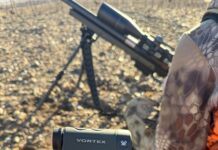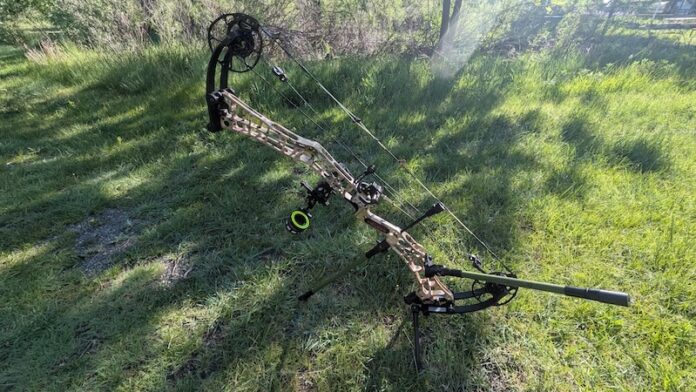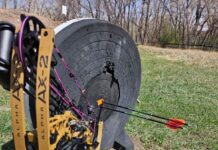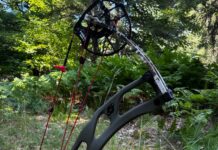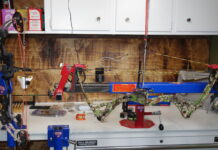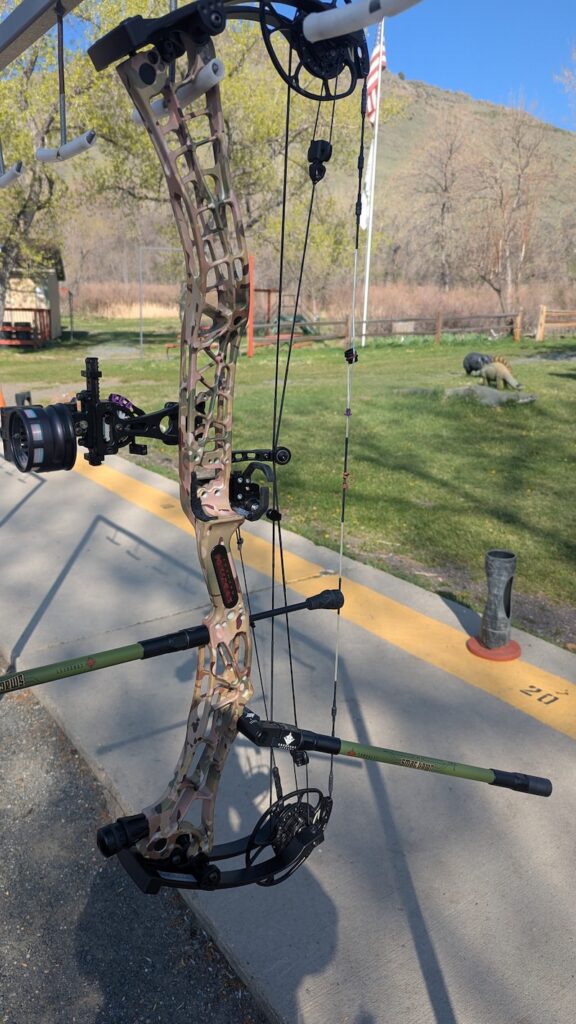
Darton Archery has never been on my radar until this past winter when I stopped in at Bear Creek Archery and started picking their minds about new tuning tech on ‘25 bow launches. Being someone who likes to fine tune shooting bare shafts at distance and believes that clean arrow flight leads to better broadhead penetration, I nerd out over easy tuning features. I learned that Darton’s 2025 Sequel ST2 series introduces their Perfect Tune limb pocket system and Perfect Timing cable yoke system, both single wrench, press-free tuning adjustments. Digging further into Darton’s history, I learned that there is a long list of Darton patents licensed out to other bow manufacturers. I ended up having a conversation with Darton’s Blake Davis, and he provided a little more insight,
“No outlandish claims, just reliable performance. Independently owned and backed by 75 years of archery innovation surpassing the highest standards—engineered and assembled in Hale, Michigan to deliver an outstanding experience for the archer. That is the Darton difference.”
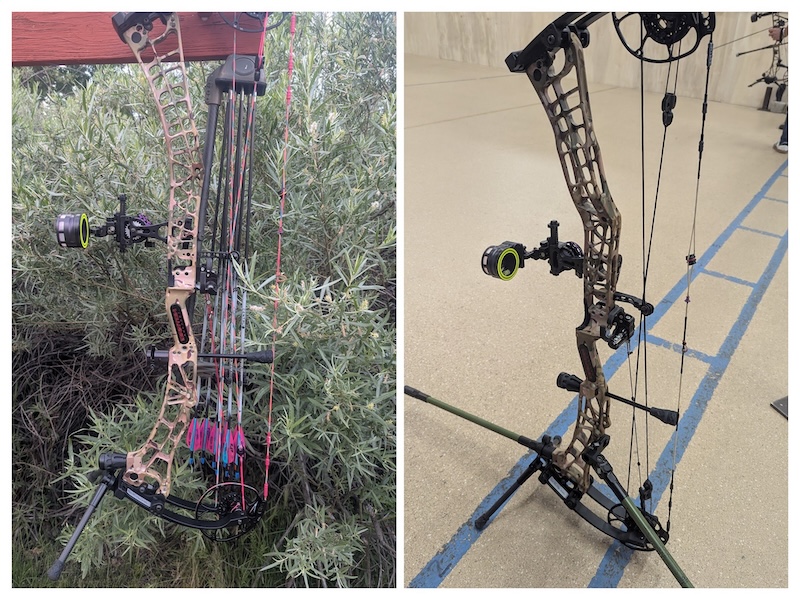
I like putting things to the test and placed an order with my own dollars. I chose a 60lb limb Sequel ST2 35 with the intention of filling a hybrid role of both hunting and target focused setups. The Darton Sequel ST2 also is available in a 33” axle to axle and a 31” axle to axle. I couldn’t resist the Folds of Honor special edition MultiCam riser with black limbs, or the story behind its purpose. With each Folds of Honor bow purchased, a portion of the proceeds is donated to support the Folds of Honor Foundation, which provides educational scholarships to the spouses and children of fallen or disabled military personnel.
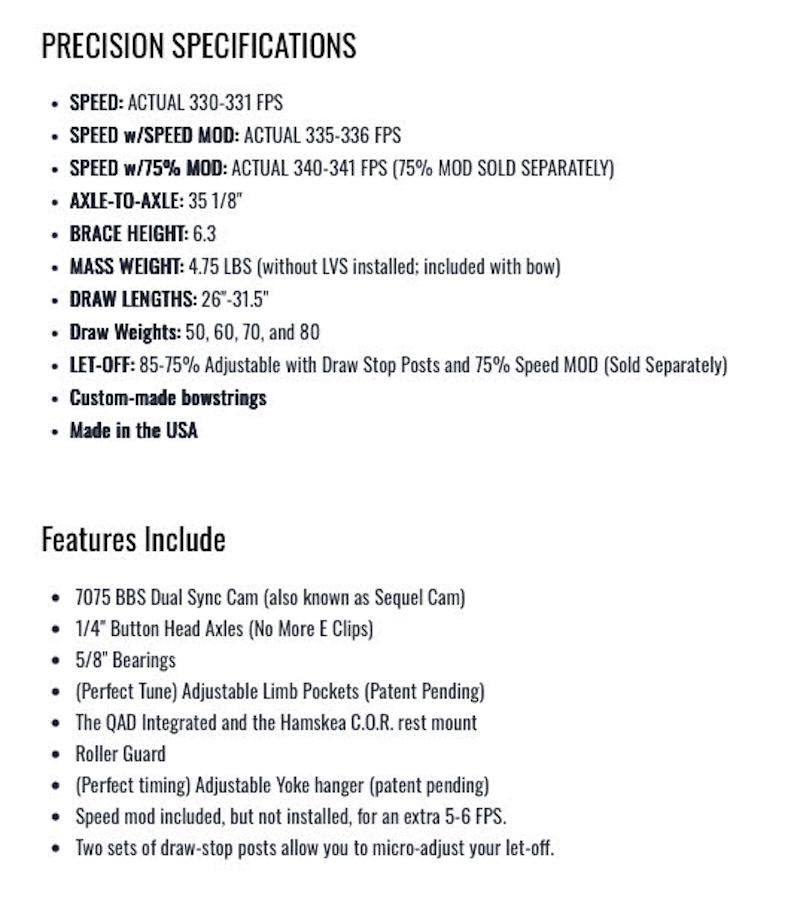
Aside from the new tuning tech, the Darton Sequel ST2 series has a handful of other feature set wins. Three stabilizer inserts can be found just below the grip, at the bottom front of the riser just above the limb pocket, and on the bottom rear of the riser. Darton also includes a short stabilizer they call the Lower Vibe Stop (LVS), a speed module, a smooth module, fat and skinny metal draw stops (shown on the cam below) to change letoff feel, and 452X strings made by either Threadz or Rogue. Both cams have timing marks, the grip is a side plate version, and the arrow shelf has a machined line designating the centershot. My sample weighed 5.18lbs with the LVS installed. The riser is tapped with two berger holes, machined for the QAD integrated mounting system, and also tapped with the Hamnskea C.O.R. system. It should be noted that the riser is a little thicker than most, so some rests and sights may need a wider adapter to accommodate. My Spot Hogg Fast Eddie had no issues, but I did need to order a longer horizontal/windage bar for my Hamskea Epsilon V1 universal mount.
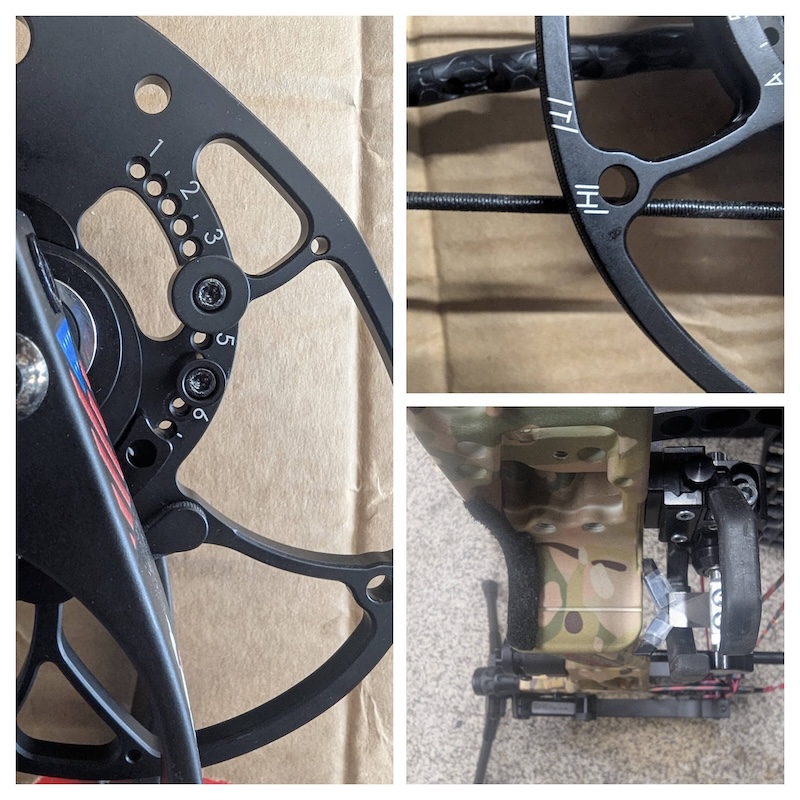
Darton also threaded the limb pocket for their proprietary Darton Foldable Bow Stand. I have never used any sort of leg setup, and have viewed them as pretty gimmicky, but I was dead wrong. Shooting with the legs down caused no balance or vibration issues, and leaning the bow forward onto the stabilizer/quivalyzer/tree/etc became preferred to hanging it up. I can see it being very useful on any type of hunt going forward, and it was far more stable than I could have hoped.
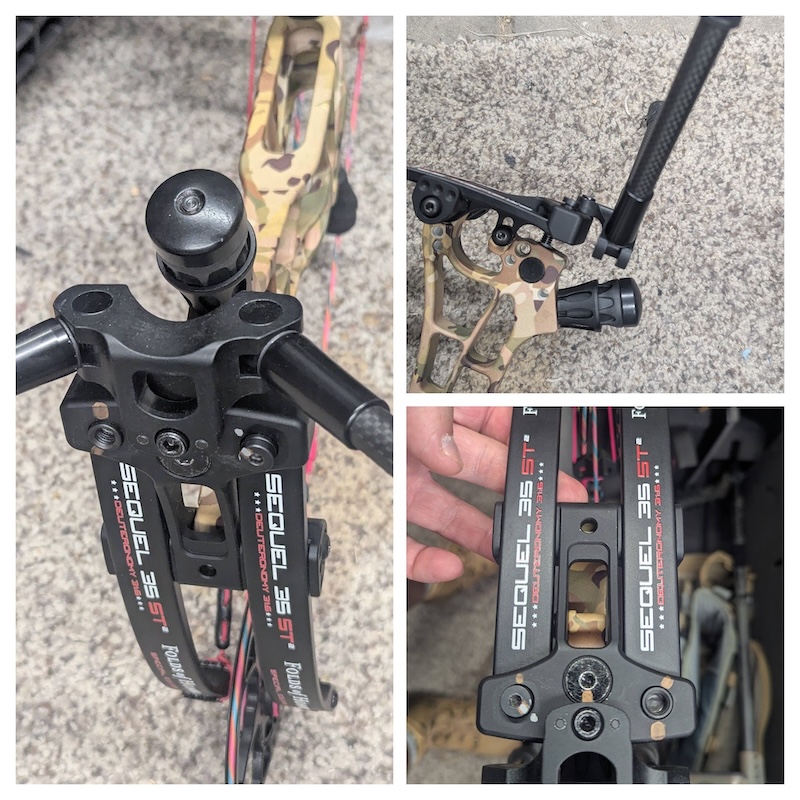
I have written a handful of bow reviews for Rokslide and normally include a chart highlighting actual draw length for each draw length setting, but I found the Darton Sequel ST2 to be spot on with the factory installed high let-off smaller draw stops and both the smooth and speed mods. Switching to the slightly lower let-off fatter draw stops only shortened the draw length by ⅛”, but did provide a noticeable change in the draw’s back end.
While the smooth mods were an easy pull and let down, the speed mods gained a consistent ~7fps and were just a little earlier load of draw weight up front while carrying that load a little further at the end of the draw cycle. I ended up shooting mostly with the speed mod and fatter, lower let-off draw stops. Darton separately sells a 75% let-off module that brings even more speed than the included speed mod. The Darton Sequel ST2 35 is the slowest rated of the series, but hangs with the speedy Elite Omnia while tying/beating the Mathews LiftX 33 I have.
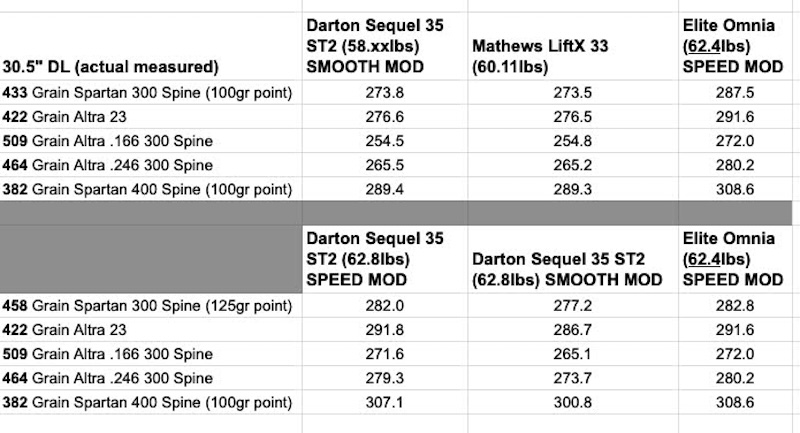
The Darton Perfect Tune limb pocket system functions by applying additional pressure to the needed limb; in essence increasing draw weight to that specific limb. The below picture shows how the Perfect Tune bolt adds load to the limb causing it to be seen below the pocket. This has the same effect of manipulating the load on the axle as shimming cams and yoke tuning has, but in a more detailed and precise manner. Both the top and bottom limb pockets have the Perfect Tune system; Perfect Tune adjustments should be on the same side of the bow, and as equal as possible.
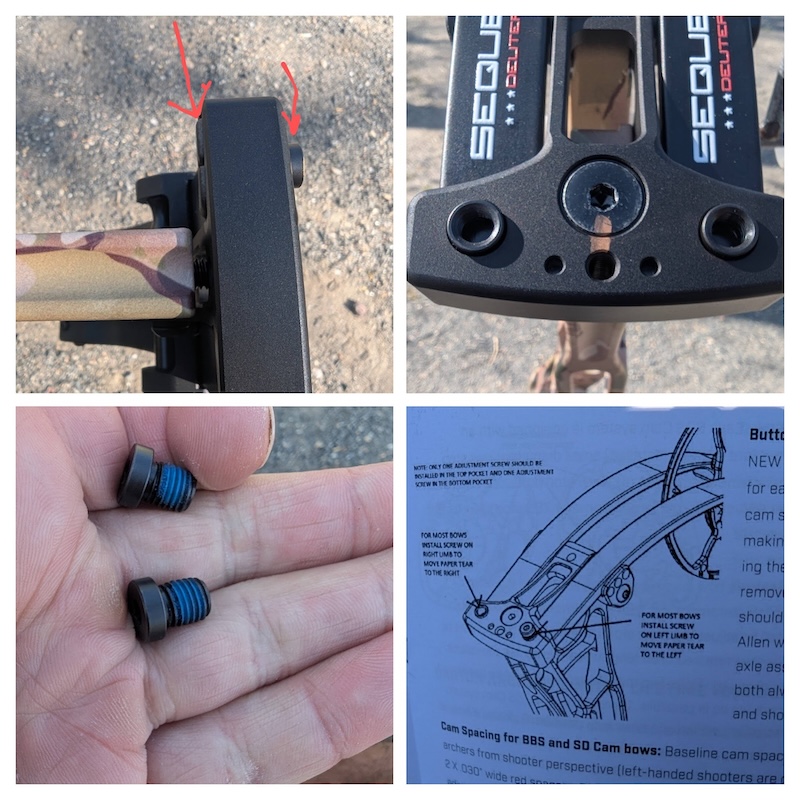
While Darton does have a visual explanation in the Sequel ST2 manual shown above, I made this chart to act as a tuning cheat sheet.
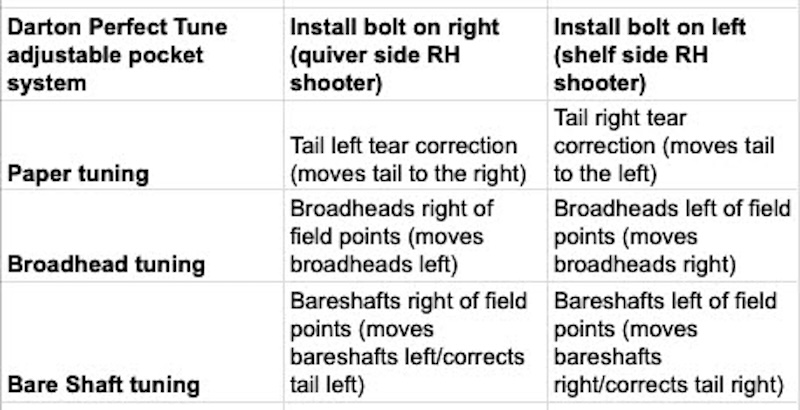
I found the Perfect Tune system to be dreamy in tuning. Our local archery club does not allow broadheads to be shot, so I have taken to shooting bare shafts as my fine tuning method after an initial paper tune. The efficiency of standing on the shooting line with a single allen wrench and being able to take a shot, analyze with binoculars, tighten/loosen the Perfect Tune bolt, and shoot again is unmatched. The photos below follow this exact process where a bare shaft was shot at 50 yards (after an initial paper tune) and impacts a little tail right. Tightening the Perfect Tune bolt on the left side of the bow a little bit straightened things out. ~60lbs draw weight and 300 spine arrows fine tuned in a few shots!
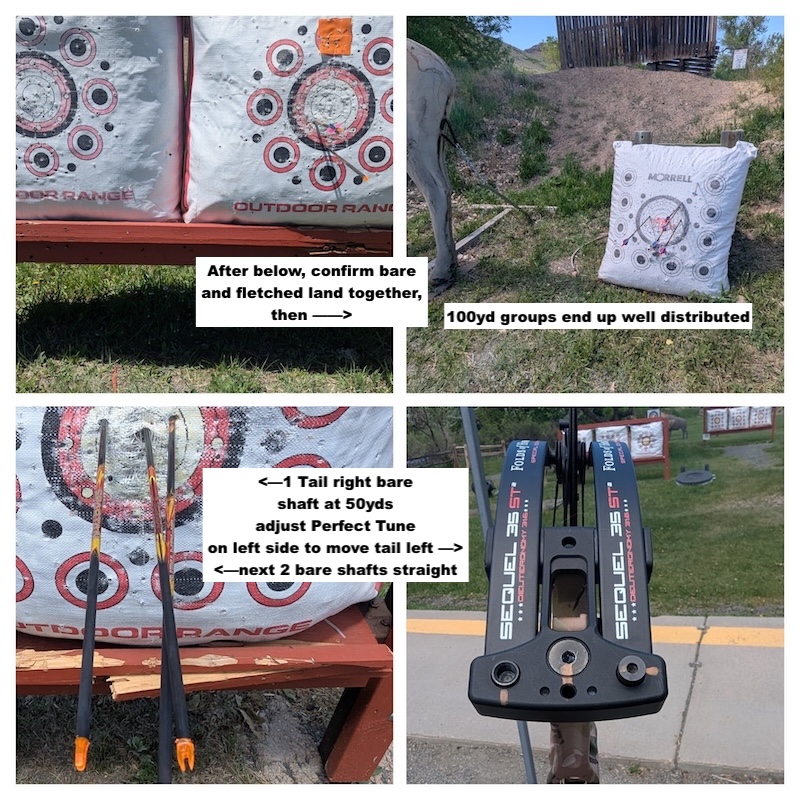
The Perfect Timing system was equally as dreamy and allowed me to twist either cable through an infinite 360 degrees of adjustment to get both draw stops hitting EXACTLY. On top of that, no bow press is needed and only a single allen wrench is required. Simply loosen the set screw in the Perfect Timing yoke, and then twist the wing nut looking portion. This eliminates the common timing problem of a half twist being a little too much. Using the draw board on my Total Vise Legacy Bow Press it was easy to time the cams perfectly. Since the Sequel ST2 has metal draw stops, perfectly timing the cams provided a back wall that felt as firm as a limb stop.
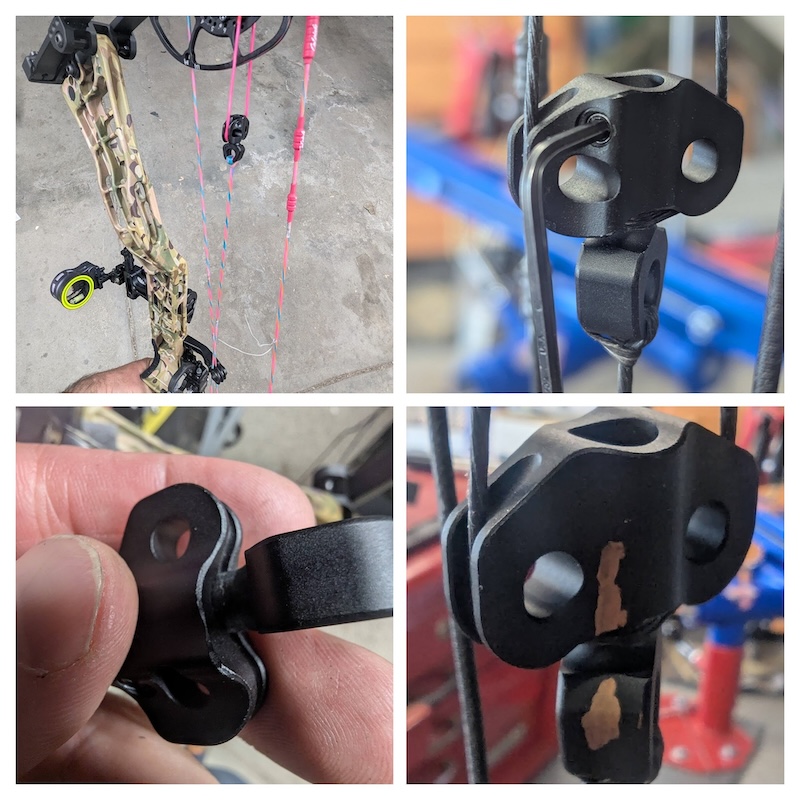
Down range results with the Sequel ST2 were measurable improvements in my scores both indoors and on the 3D course. The 35” axle to axle brought stability that I haven’t come across yet in a bow, and I was able to play around with configurations from no stabilizer at all to loaded up front and side stabilizers without any change in point of impact or arrow flight.
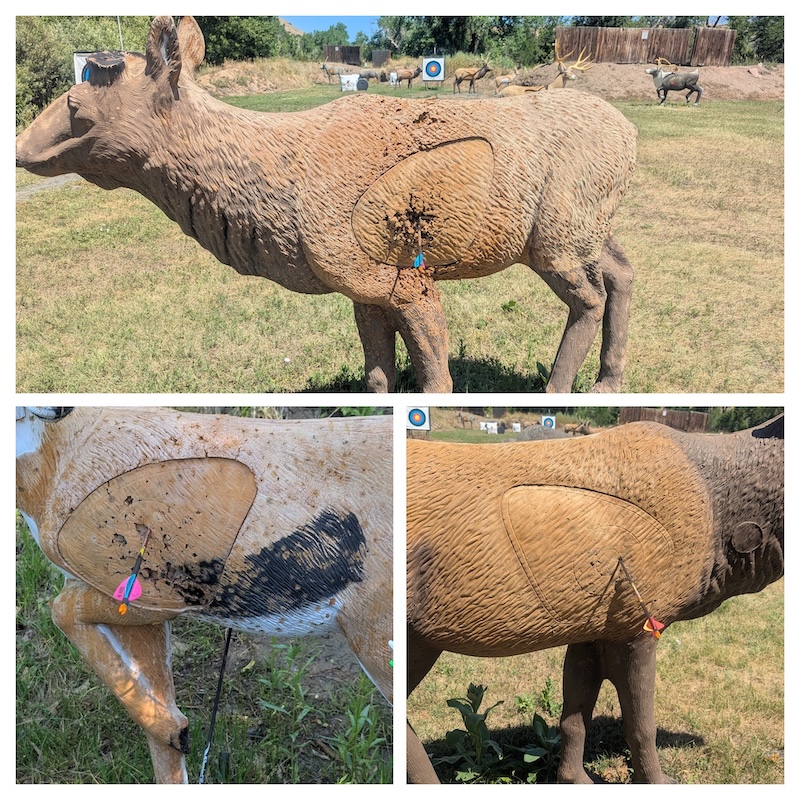
It has been a very long time since I shot with stabilizers and having the ability to mix and match from a lean hunting setup to a loaded indoor competition setup WITHOUT needing to adjust the sight is exactly what I was looking for. From a hunting perspective, this gives me a worry free choice in using my quivalizer in the traditional side position or out front as a stabilizer depending on wind/terrain/vegetation.
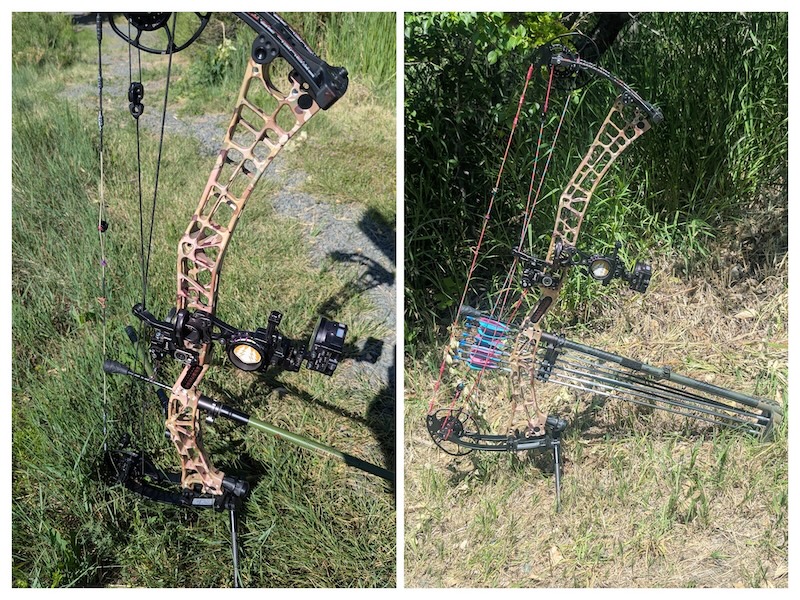
After a summer of shooting the Sequel ST2 and watching little laser beams of fletching and nock hit behind my pin, my confidence was at an all time high. I can’t express how well this bow fits me from the grip to the draw cycle and everything in between. Old age came calling however, and a surgery was needed on my left/bow shoulder in mid-July. My only drawn tag this year is an archery doe pronghorn hunt so a few days before surgery I backed the limb bolts out the maximum 7 full turns (per Darton) resulting in a draw weight around 43lbs. I grabbed some 400 spine arrows and headed out to broadhead tune. For the sake of experimenting and demonstrating the Perfect Tune ease, I moved the Perfect Tune bolts to the right side of the bow.
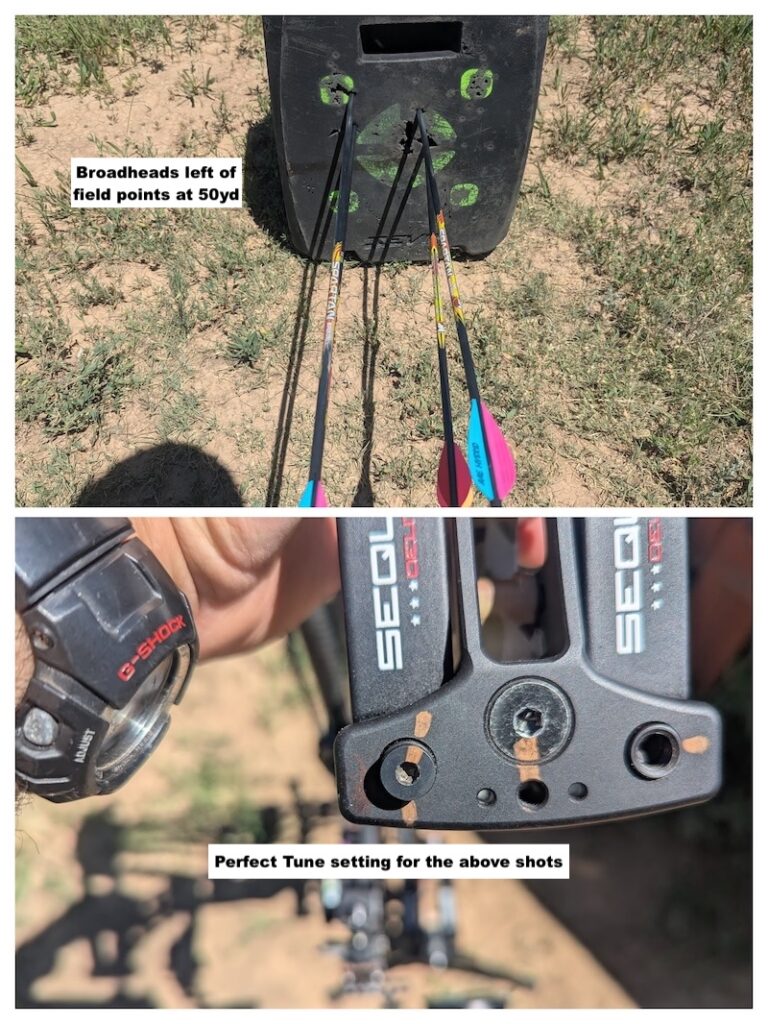
Shown above, at 50 yards, my Cutthroat 3 blade broadheads were impacting left of my field points. I moved the Perfect Tune bolts over to the left side of the bow, and this brought the broadheads and field points together. It cannot get easier than 8 arrows shot and a turn of an allen wrench to broadhead tune, and I was able to re-adjust all pins for the new draw weight and set a sight-tape all in less than two hours.
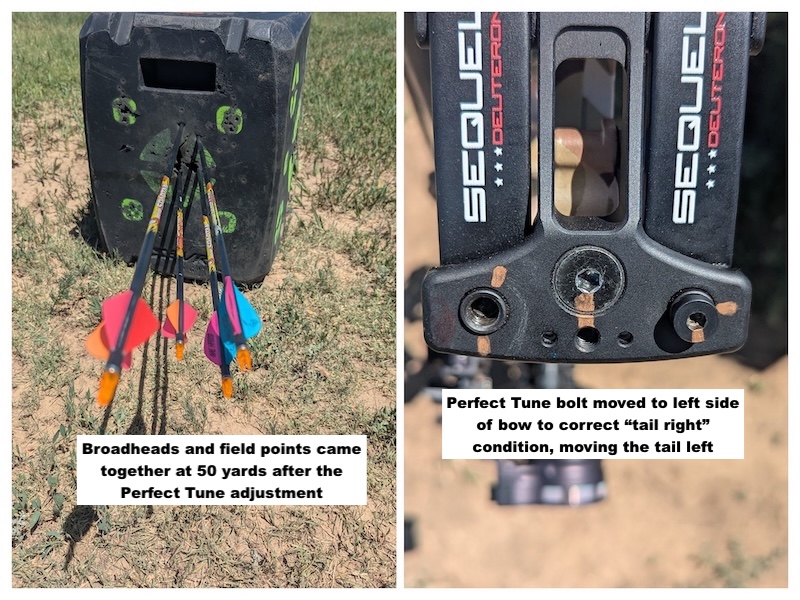
Tuning
While I am 100% certain I can pick my Sequel ST2 up in several weeks and put broadhead-tipped arrows exactly where I want, I did run across a few hiccups. First, my initial paper tuning required me to fully tighten the Perfect Tune on one side; the tear I was getting was about 1” long before using the Perfect Tune. Arrow flight was adequate, but I knew for my purposes of fine-tuning and experimenting with the Perfect Tune, I wanted to have more adjustment available to me.
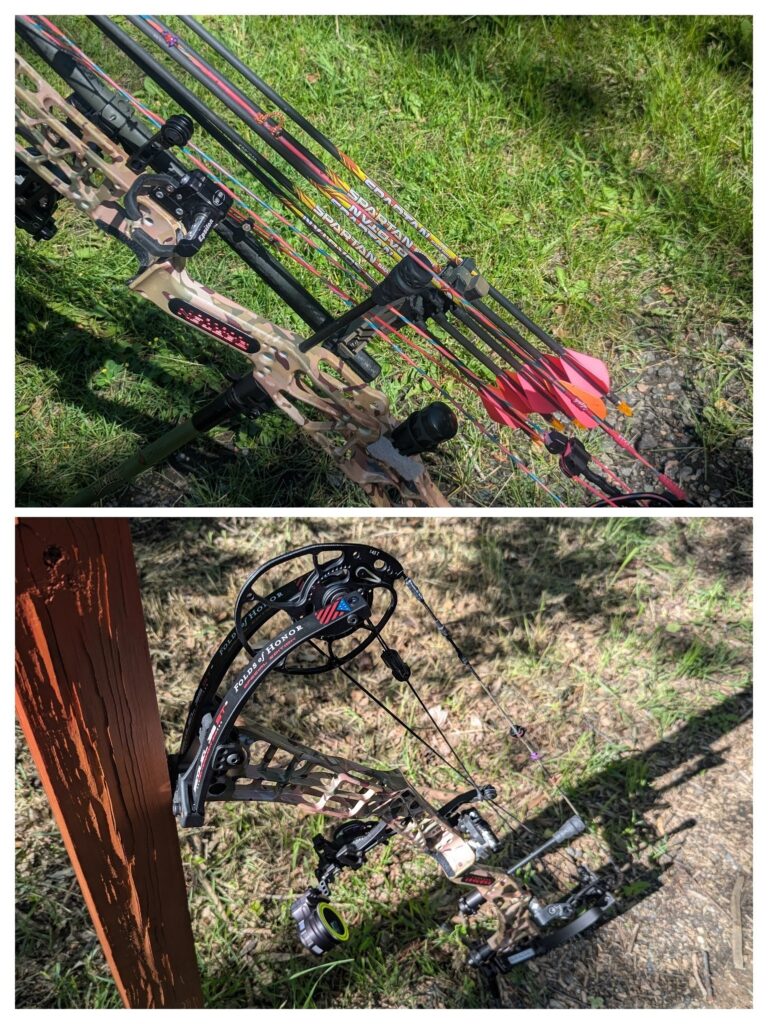
My Sequel ST2 came with a black .135” shim on the right side and two red .032” shims on the left side, both top and bottom. Swapping a red shim to the other side, both top and bottom, proved to be too big a change, so I moved the red shim back on the top cam, returning it to how it came from the factory. Howard’s Legacy Bow Press and the fact that the Sequel uses ¼” button head axle screws helped tremendously, but shimming was still not in my 2025 archery plans. Darton does sell a shim kit, which I ordered and ended up making the top and bottom cams symmetrical by replacing one of the factory red .032” shims with two .015” white shims per axle. These shim changes allowed me to be close to the middle of the Perfect Tune’s adjustable range and take full advantage of the system on both sides of the limb pocket.
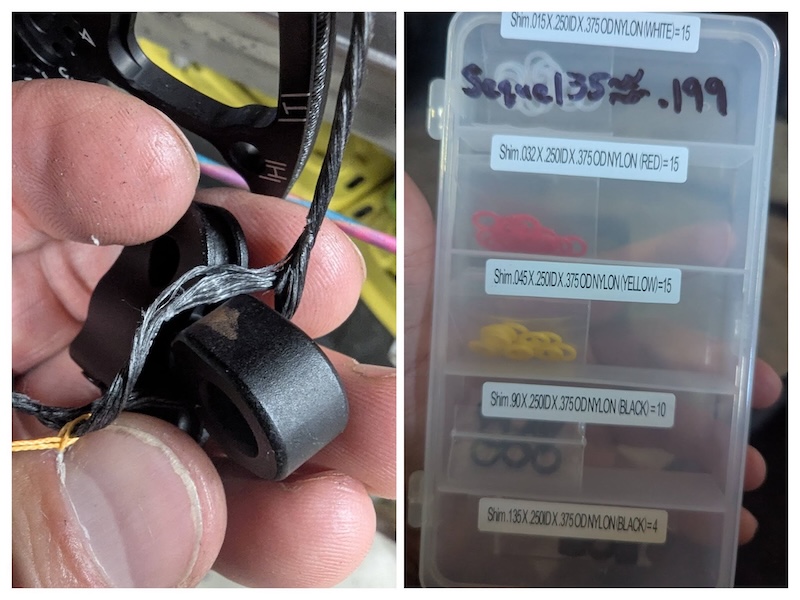
The second hiccup was completely my fault in using the Perfect Timing system outside of its intended use, but it is worth talking about. You might notice on the picture near the start of this review showing the cam timing marks, that there are two sets of timing marks: one with an H, and one with a T. I like experimenting and I like pictures, and not necessarily reading manuals, so, I assumed one could take a bunch of twists out of the cables to get within the T timing marks to get a more target-esque feel. The reality is that the Sequel ST2 uses the same cam as Darton’s target series bows. Per the manual (whoops!), the H timing marks are for the Sequel and the T timing marks are for the target bows. I used the Perfect Timing system to easily take 27 continuous twists out of each cable before questioning myself and opening the manual. Following that dummy move, I noticed some fraying on the cable that is closest to the part of the Perfect Timing that actually rotates. My guess is the fraying was caused by heat/friction built up from the 27 continuous rotations; the lesson is to make multiple rotations slowly or spaced a minute or two apart, or press the bow when needing to add/subtract multiple twists. Of course, then one would use the Perfect Timing system to fine tune cam timing from there.
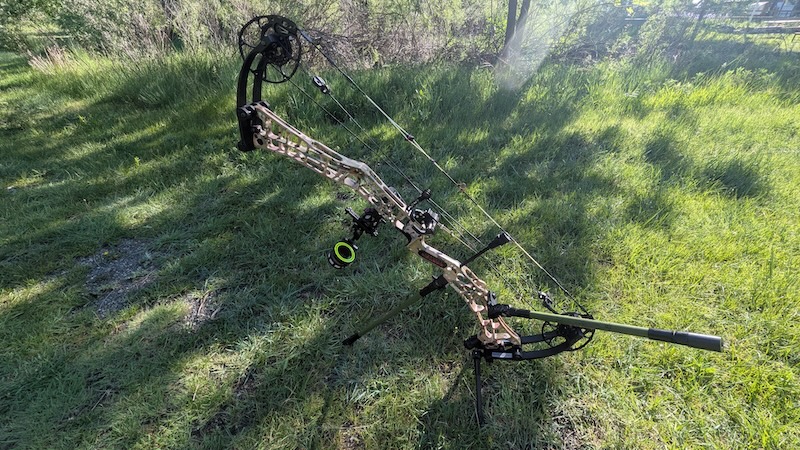
Oveclusion
rall, I love this bow. If you have read any of my other reviews I typically try to stay away from subjectivity and stick to providing objective information. I can’t do that here, this Darton Sequel ST2 35 is bliss for me. It’s a bow that I can use from the elk timber to the pronghorn blind to the 3D course to indoor spots league with more confidence than I’ve had in the past. Every box that I can think of in the realm of objective specs and subjective feel gets checked; it’s got a future in my hands for many many years to come. If you are intrigued, find a Darton dealer here.
Ask Kyle questions about the Darton Sequel ST2 here
Read more Rokslide Archery reviews here




